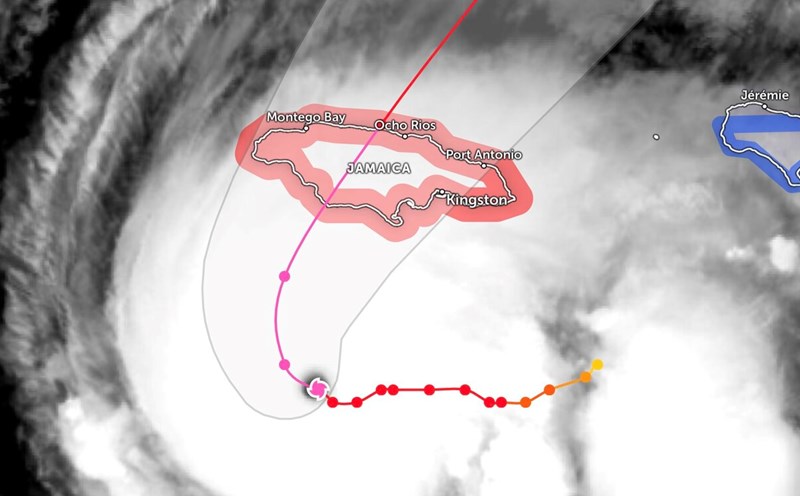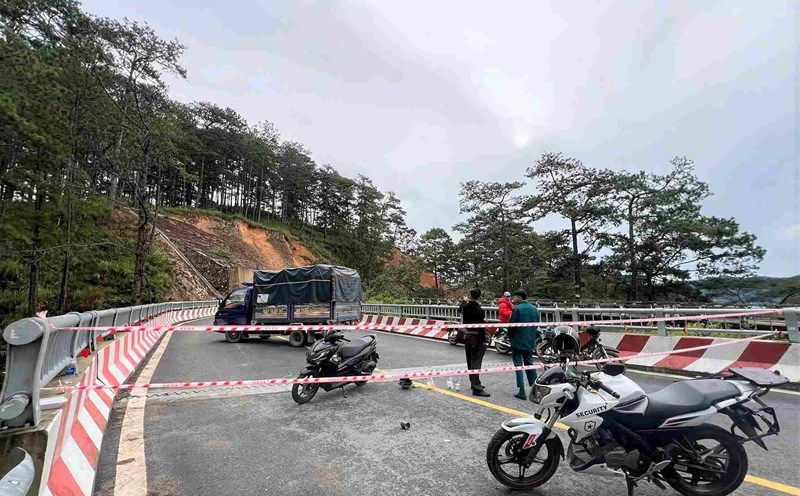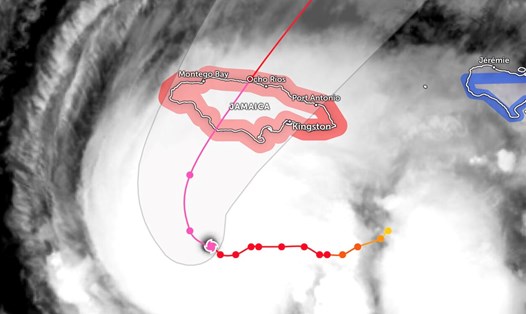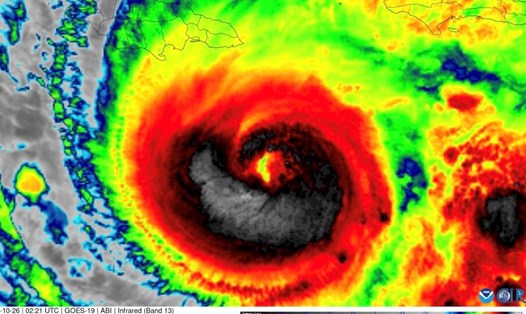The latest storm news from the US National Hurricane Center on the morning of October 28 said that Melissa is a Category 5 storm with winds of 280 km/h but is likely to strengthen in the coming hours.
The terrible power of Melissa has put this storm in a special group. With sustained winds of 280 km/h, Melissa is now one of the strongest storms ever recorded, based on maximum wind speeds, in the Atlantic basin.
Only nine Atlantic hurricanes have been stronger than Melissa, although some have reached winds of 140 mph. The 1980 super typhoon Allen still holds the title of the strongest storm in the basin, with winds of 295 km/h.
Hurricane Melissa is also one of the strongest storms to hit the Caribbean Sea, behind Allen, Wilma in 2005, anch anchor in 1998 and Gilbert in 1988". Gilbert is the last major storm to hit Jamaica directly.
The center of the strongest storm on Earth in 2025 is 233km southwest of Kingston, Jamaica. Melissa has begun turning north toward Jamaica and is currently moving west-northwest at nearly 5 km/h.
The Atlantic storm No. 13 has moved westward more slowly than expected in the past few hours, so the expected landfall point of Meliss in Jamaica has also changed. Forecasters say Shelter will make landfall near the Black River, southwest of the island, on the morning of October 28.
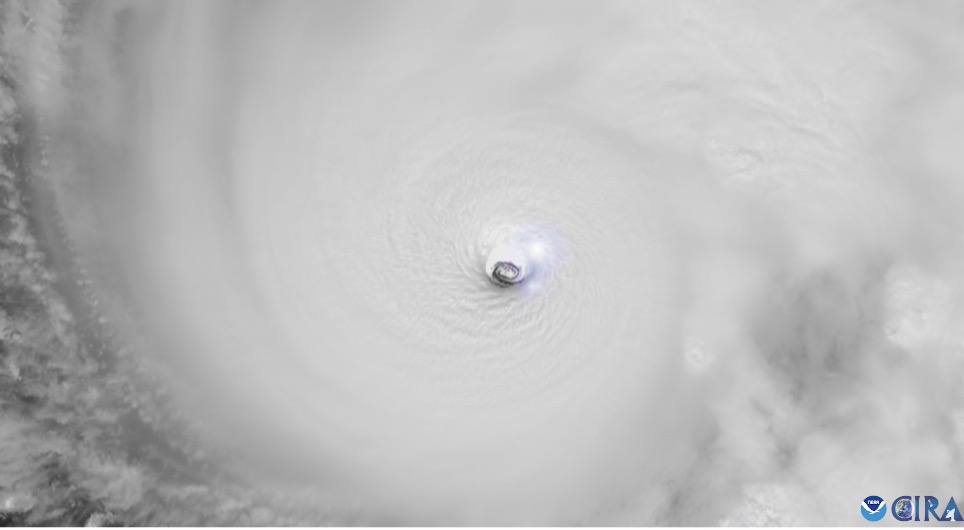
Melissa is still likely to be a severe Category 5 storm when it makes landfall for the first time, despite the possibility of minor changes in the strongest winds at the time the storm makes landfall in Jamaica.
After making its first landfall in Jamaica, Melissa is forecast to make landfall in Cuba as a major typhoon on the night of October 28 or early morning of October 29. The latest storm of this year's hurricane season will affect parts of the Bahamas and neighboring areas.
Forecasters pointed out that Shelter is expected to make landfall along the southern coast of Jamaica on the morning of October 28, but the highest risk comes from dangerous winds that will be concentrated in the northeastern part of the storm's center. This means most of the island will be endangered when the storm makes landfall.
This is due to the way the storm rotates: The whirlwind is counterclockwise as the entire storm is pushed forward. On the right side of the storm, moving forward increases the whirlwind power, causing stronger gusts of wind with a higher risk of major waves. On the left, these forces begin to stand in contrast and eliminate each other.
For Jamaica, this means that the eastern areas where the center of Melissa passed through could face the most serious coastal wind and flooding damage. The western parts of the island may have weaker winds but are forecast to see dangerous heavy rain and flash flooding during flooding from Shelter.

